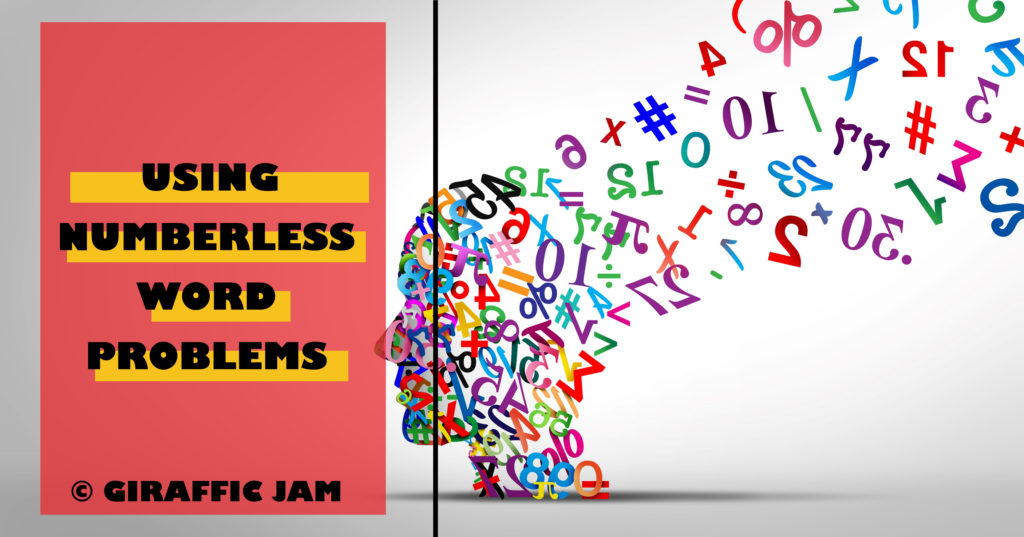
Numberless word problems are a unique and effective approach to teaching mathematics that emphasize conceptual understanding and problem-solving skills. This blog post will explore the benefits of numberless word problems, defining what they are, where to find them, how to write them, and how to teach them effectively.
Numberless word problems are math problems presented without numbers or specific quantities. Instead of focusing on numerical calculations, these problems encourage students to think deeply about the relationships and structures within a problem. By removing numbers, students are less likely to jump straight into calculations and are more likely to engage in thoughtful consideration of the problem at hand.
For instance, a traditional word problem might ask, “If you have 5 apples and you buy 3 more, how many do you have?” A numberless version might be, “You have some apples. You buy more. How can you find out how many apples you have now?” This approach prompts students to think about the underlying mathematical concepts, like addition, without getting distracted by the numbers.
Numberless word problems are becoming increasingly popular, and there are several resources available for educators and parents:
Creating numberless word problems requires a shift from traditional problem-writing. Here are some steps to follow:
For example, instead of saying, “12 birds were sitting on a tree, and 7 flew away, how many are left?” you might say, “Some birds were sitting on a tree, and some flew away. How can you figure out how many are left?”
Teaching with numberless word problems involves guiding students through a process of discovery and understanding:
For example, in a classroom setting, present a numberless word problem on the board and facilitate a class discussion on different ways to approach it. Encourage students to think aloud about their strategies, then gradually introduce numbers and ask them to apply their strategies
Numberless word problems represent a shift from traditional rote learning to a more conceptual and process-oriented approach in math education. They help students develop critical thinking, problem-solving skills, and a deeper understanding of mathematical concepts. By integrating numberless word problems into the curriculum, educators can provide a more engaging and effective learning experience for their students.